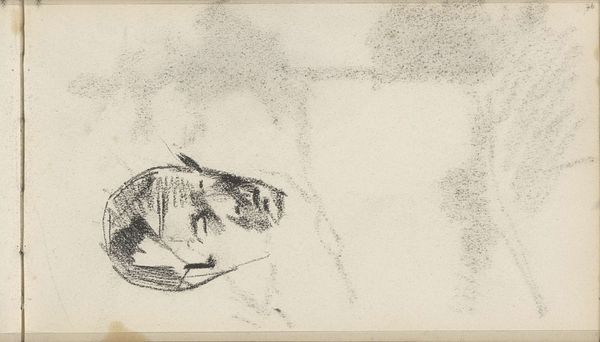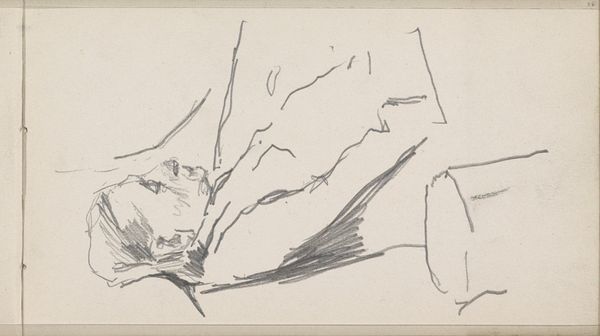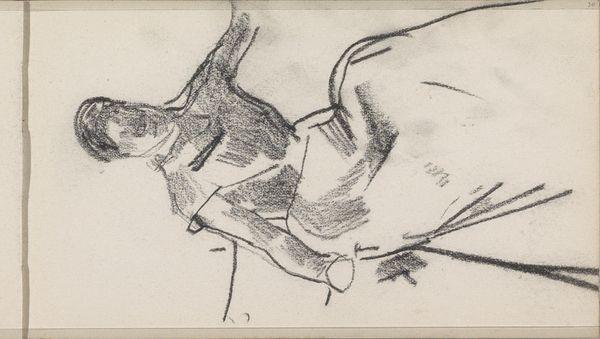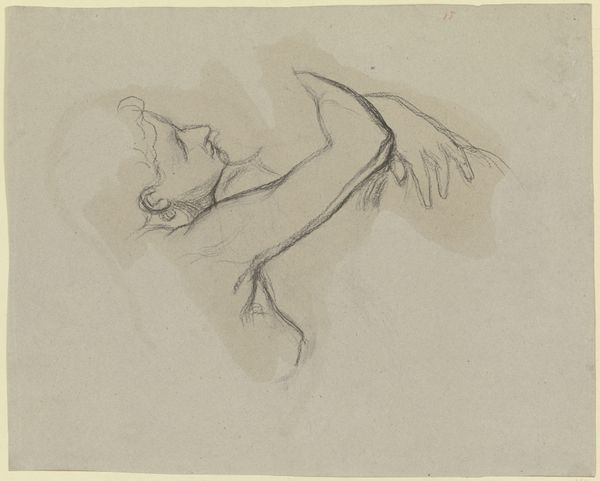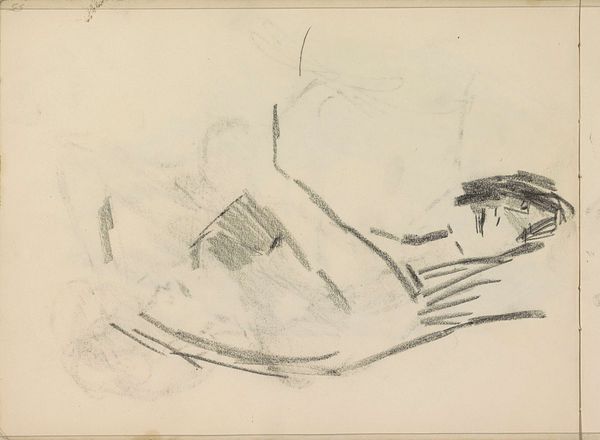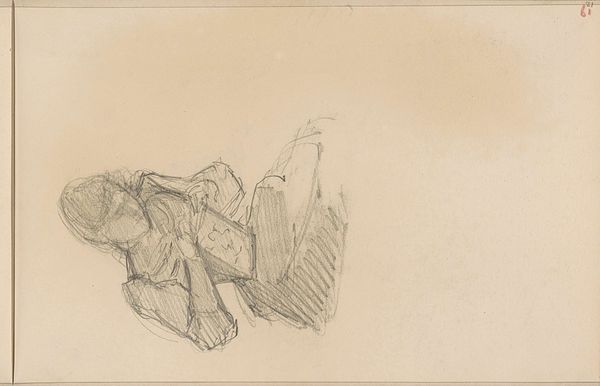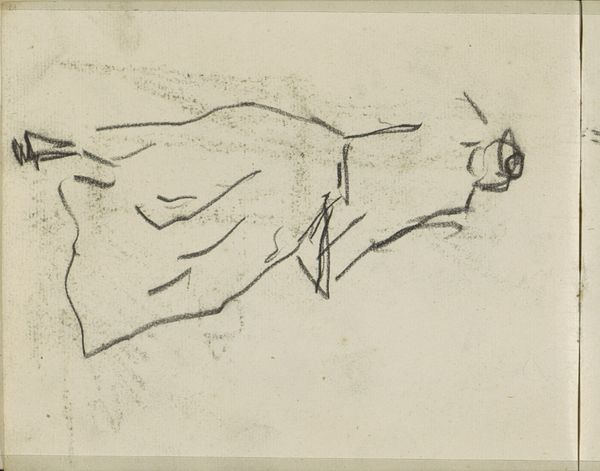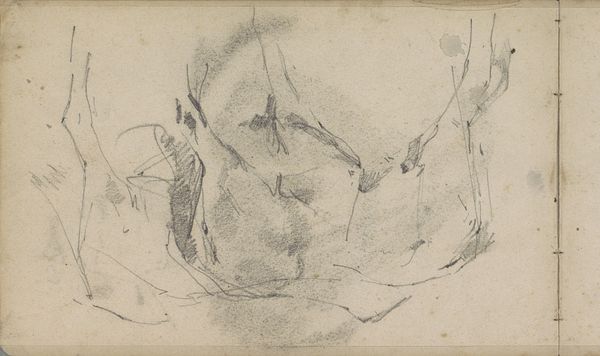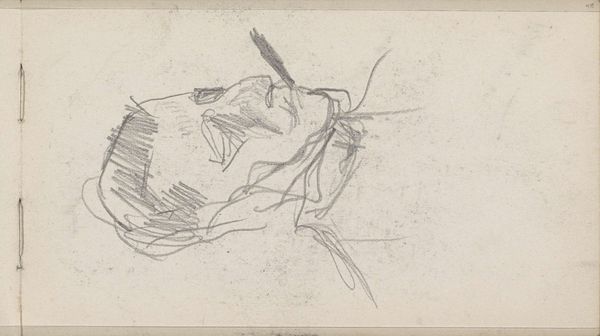
drawing, pencil, graphite
#
drawing
#
light pencil work
#
impressionism
#
pencil sketch
#
figuration
#
pencil
#
graphite
#
pencil work
Copyright: Rijks Museum: Open Domain
Editor: This is "Figuurstudie" or "Figure Study," a graphite drawing by George Hendrik Breitner, from around 1886 to 1890. It's so gestural and loose! What strikes you about it? Curator: Well, seeing a work like this, created during the rise of mass media, immediately prompts questions about the role of art and representation. Breitner was active during a time of immense social change in the Netherlands. Editor: Social change, how so? Curator: The late 19th century saw increasing industrialization and urbanization. How do you think Breitner, an artist known for depicting Amsterdam street life, engaged with those rapid shifts in a work like this one? It is less about social realism and more intimate. Editor: I guess... instead of showing the spectacle of modern life, he's focusing on something more private. Is that a reflection on those major historical and societal changes? Curator: Precisely! He might have used drawing like this to carve out a space for subjective experience, at a time when people were more aware of themselves through mass media. What does it mean for an artist to study figures when photography can reproduce images with such precision? Editor: So, in a world oversaturated with images, art offered something different: intimacy, subjectivity... It’s like the artistic process becomes just as, or even more important, than what is represented in the image. Curator: Exactly. This is how artists reacted to new representational strategies, such as photography and cheap printing techniques, by turning inwards, towards a world unseen and intimate. Editor: I see, I'm beginning to appreciate it even more through that social context. Curator: And that understanding, I think, enriches our view of the drawing and Breitner's approach.
Comments
No comments
Be the first to comment and join the conversation on the ultimate creative platform.
